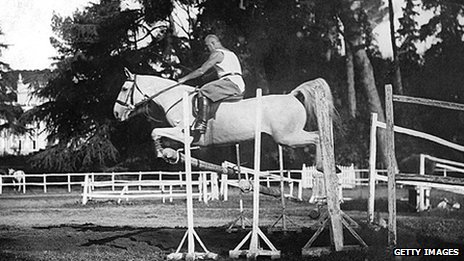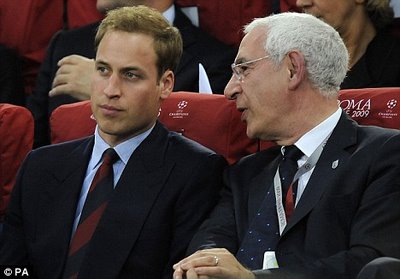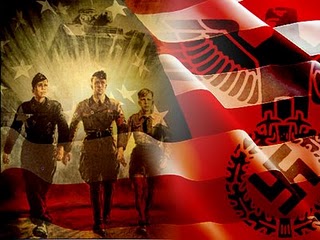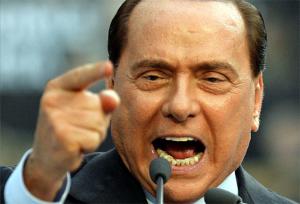Alex Constantine - September 13, 2014
Integration of Church and State
By George Howland Jr.
Book Review - The Pope and Mussolini / By David I. Kertzer
A scholar exposes the collaboration between Benito “Il Duce” Mussolini and Pope Pius XI
The history of fascism has been too kind to the Roman Catholic Church and its leader at the time, Pope Pius XI. In “The Pope and Mussolini,” professor David I. Kertzer provides a sharp corrective to the record in his groundbreaking, accessible history based on seven years of research into newly available records at the Vatican Secret Archives. Kertzer writes, “The Roman Catholic Church, or so the common narrative goes, fought heroically against Italian Fascism. The popes opposed the dictatorship, angry that it had deprived people of their civil rights. Italian Catholic Action, the Church’s organization of the laity, stood as one of the most potent forces opposing the regime. The Fascist ‘racial laws’ in 1938, in this comforting narrative, sparked indignant protests from the Vatican, which denounced their harsh treatment of the Jews.”
Sadly, Kertzer documents the opposite.
Italy and the Roman Catholic Church experienced a momentous year in 1922. In February, after 14 ballots, Achille Ratti was elected Pope Pius XI. In October, 26,000 armed fascists marched on Rome, Italy’s capital, and installed Mussolini as prime minister.
From the beginning of Mussolini’s dictatorship until Pope Pius XI’s death in 1939, the pontiff provided crucial support for Il Duce’s brutal reign. The pope’s reasons for doing so stretched back more than 100 years.
From 756 until 1870, popes were both heads of the church and rulers of the Papal States, a territory that included much of what is now central Italy, including Rome. In 1870, the young nation of Italy conquered the Papal States and established a parliamentary democracy. The new country of Italy separated church and state by, among other things, banning religious education in public schools and not recognizing religious marriages. All that was left of the Papal States were 109 acres surrounded by the city of Rome: Today it’s called Vatican City.
In protest, the Roman Catholic Church refused to acknowledge the legitimacy of the nation of Italy. There were no diplomatic relations between Italy and the Vatican. Popes, once elected, refused to set foot on Italian soil.
Although Mussolini and Pope Pius XI were an odd couple, they healed this breach.
 Mussolini was an atheist. His followers brutalized priests and Catholic laypeople who opposed fascism. In the election of 1921, the fascists only elected 35 deputies in an Italian parliament of 352 members. At that point, however, Mussolini changed course on the question of religion. “Fascism, he pledged, to the shock of many who knew him, should help bring about the restoration of Christian society. It would build a Catholic state befitting a Catholic nation,” Kertzer writes.
Mussolini was an atheist. His followers brutalized priests and Catholic laypeople who opposed fascism. In the election of 1921, the fascists only elected 35 deputies in an Italian parliament of 352 members. At that point, however, Mussolini changed course on the question of religion. “Fascism, he pledged, to the shock of many who knew him, should help bring about the restoration of Christian society. It would build a Catholic state befitting a Catholic nation,” Kertzer writes.
When Mussolini seized power in 1922, he did not have an overwhelming popular mandate, but he had a key supporter in Pope Pius XI.
In December 1922, two months after Mussolini’s putsch, Pius XI outlined the goals of his papacy. He declared war on modernism. “The pope’s plan was to bring about the Kingdom of Christ on earth. At heart, it was a medieval vision,” according to Kertzer.
Behind the scenes, Pius XI began his effort to make Mussolini a vessel to achieve these ends. The pope hoped for nothing less than eliminating the separation of church and state, creating a new model for world government through creating an authoritarian Catholic state without a parliament, free speech or freedom of religion.
Mussolini, for his part, was very public in his effort to curry favor with the Vatican. By December 1922, “[he] ordered crucifixes to be placed on the wall of every classroom in the country, then in all courtrooms and hospital rooms. He made it a crime to insult a priest or to speak disparagingly of the Catholic religion. ... [H]e required that the Catholic religion be taught in the elementary schools.” Mussolini recognized that he needed the church to help create genuine popular support for his dictatorship.
Soon, the pontiff and the dictator entered into secret negotiations through emissaries. The result was the historic Lateran Accords of 1929. Under the Accords, Catholicism became “the only religion of the State [of Italy].” Vatican City became a sovereign territory with the pope as its supreme ruler. The Church officially recognized Italy and diplomatic relations were established. The state extended mandatory religious instruction to secondary schools and recognized religious marriages.
The agreement did not eliminate all conflict between the pope and Mussolini. The pontiff complained that Mussolini was too lax in enforcing the laws against Protestant evangelizing. Pius XI was also deeply concerned about Mussolini’s treatment of Catholic Action, an organization of laity that the pope hoped would be the “ground troops for re-Christianizing Italian society.” In 1938, when Mussolini instituted the anti-Semitic “racial laws,” the pope’s objections were limited. Pius XI didn’t oppose the persecution of Italian Jews, per se, but of the Jews who chose to convert to Christianity. Catholics of Jewish heritage, Pius XI asserted, should be immune from the racial laws.
By the end of Pius XI’s life, he felt Mussolini had misused the Church, turning it into a vessel for realizing fascism rather than the opposite as the pope had originally intended.
By the end of Kertzer’s compelling work, readerswill find themselves enlightened about the role that the pope and the Church played in the run-up to World War II and the Holocaust.
http://realchangenews.org/index.php/site/archives/9353








